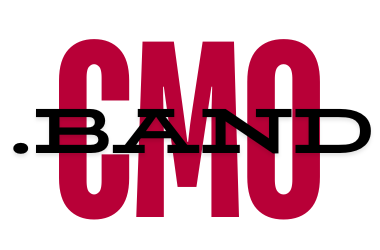Mastering GTM Strategy: Insights and Innovations from Bain & Company
In the rapidly evolving world of digital marketing, staying ahead of the curve is not just an advantage but a necessity. As businesses strive to optimize their go-to-market (GTM) strategies, insights from leading consulting firms like Bain & Company can provide invaluable guidance. Bain, with its deep expertise in customer insights and market strategy, has consistently pushed the envelope, helping companies not only adapt but thrive in the digital age. Today, let’s dive into some of the key insights and innovations from Bain that can help any business refine its GTM strategy.
Understanding GTM Strategy
Before delving into Bain’s contributions, it’s crucial to understand what GTM strategy actually entails. Essentially, it’s the plan that a company uses to engage with its customer base effectively and deliver its products or services to the market. This involves a combination of product development, marketing, sales, and distribution strategies tailored to meet market demands and maximize competitive advantage.
Bain’s Framework for GTM Excellence
Bain & Company has developed a robust framework for GTM strategy that focuses on aligning organizational elements to market needs. This framework is built on several core pillars:
Market Segmentation: Bain emphasizes the importance of precise market segmentation as the cornerstone of an effective GTM strategy. By identifying nuanced customer segments, companies can tailor their offerings to meet specific needs and preferences, thereby enhancing customer satisfaction and loyalty.
Customer Journey Mapping: Understanding the customer journey is pivotal. Bain advocates for a detailed mapping of every touchpoint a customer has with your brand, from initial awareness through to purchase and beyond. This insight allows companies to craft targeted interventions that enhance the customer experience and drive conversions.
Value Proposition Design: Bain’s approach to crafting value propositions is deeply rooted in customer insights. They encourage businesses to ask critical questions about the unique benefits their products or services offer and how these can be communicated effectively to the target audience.
Sales and Distribution Strategy: Bain helps companies optimize their sales and distribution channels to ensure that they not only reach their target market efficiently but also align with customer expectations and buying behaviors. This might involve choosing between a direct sales force, partnerships, e-commerce, or a hybrid approach.
- Performance Metrics: Finally, Bain underscores the importance of defining clear, actionable metrics to measure the success of GTM strategies. These metrics help businesses track progress, make informed decisions, and pivot their strategies as necessary.
Innovations in GTM Strategy
Bain & Company not only provides a framework but also drives innovation in how GTM strategies are implemented. Here are a few areas where their thinking is particularly forward-leaning:
Data Analytics and Machine Learning: Bain leverages advanced analytics and machine learning to gain deeper insights into customer behaviors and preferences. This technology allows companies to predict trends and customer needs with greater accuracy, leading to more effective product positioning and marketing strategies.
Digital Integration: In today’s digital-first world, Bain helps companies integrate digital technologies into their GTM strategies. This includes everything from digital marketing and social media engagement to online sales platforms and customer relationship management systems.
Agile Methodology: Borrowing from the tech world, Bain advocates for an agile approach to GTM strategy. This means being flexible in planning and execution, allowing for rapid iteration based on real-time feedback and changing market conditions.
- Sustainability and Ethics: As consumers become more conscious of environmental and social issues, Bain advises companies to incorporate sustainability and ethical considerations into their GTM strategies. This not only helps in building brand loyalty but also in complying with regulatory standards and mitigating risks.
Case Studies and Success Stories
Bain’s GTM strategies have been instrumental in transforming many businesses. For instance, a leading tech company redefined its market segmentation and customer journey mapping with Bain’s assistance, resulting in a 20% increase in customer retention and a 30% growth in revenue. Another example is a consumer goods company that revamped its distribution strategy based on Bain’s recommendations, significantly reducing costs and improving market penetration.
Mastering GTM strategy requires a blend of traditional marketing wisdom and innovative approaches that respond to an ever-changing market landscape. Bain & Company’s insights and innovations provide a roadmap that businesses can adapt and apply to their unique contexts. By focusing on deep customer insights, leveraging technology, and remaining agile, companies can develop GTM strategies that not only meet but exceed customer expectations, driving growth and success in the competitive digital marketplace.
For businesses looking to refine their GTM approach, partnering with or taking inspiration from Bain’s methodologies can be a game-changer. Remember, in the dynamic field of digital marketing, standing still is not an option. Keep innovating, keep iterating, and keep your focus on the customer—success will follow.

A seasoned digital marketing strategist with over 8 years of experience across various areas of digital marketing, including SEO, SMM, PPC, content marketing, and email marketing. Specializes in transforming B2B, B2C, e-commerce, and SaaS businesses by creating effective go-to-market strategies and building thriving digital ecosystems. Known for a data-driven approach to optimizing campaigns and maximizing results.
“If your business is looking to scale or in need of a fresh perspective, feel free to contact”.


